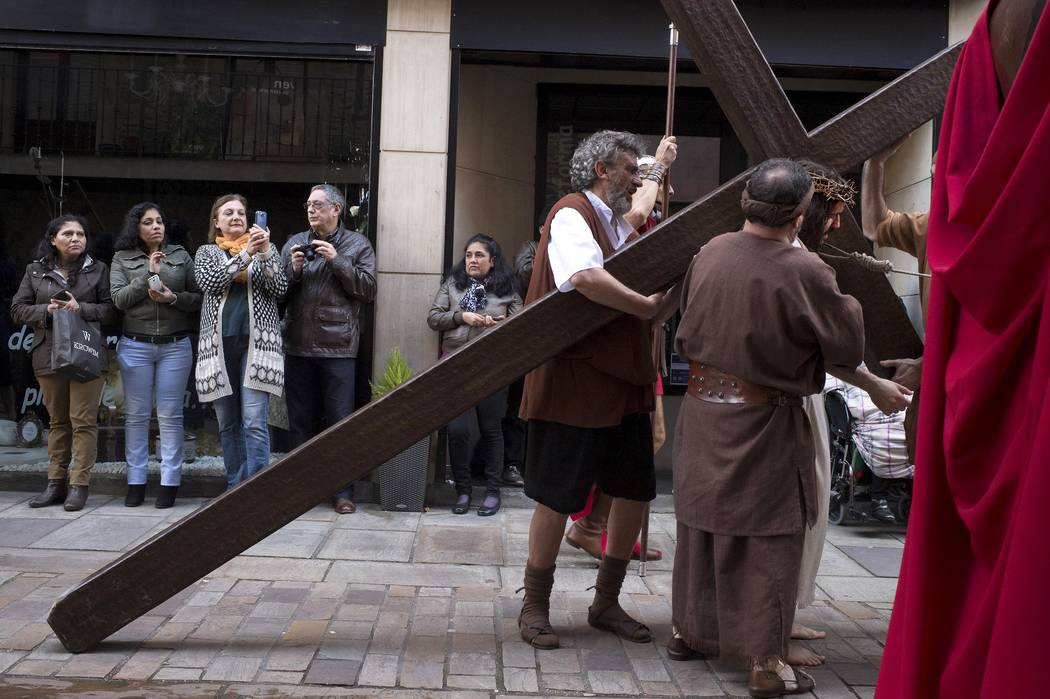The significance of Easter

Even non-Christians should consider the significance of Easter. That starts with understanding what Easter is.
Christians believe that the Bible records God’s efforts to save humanity after Adam and Eve sinned. That sin separated them and their offspring, who have all sinned, from God. The punishment for sin is death, both in this current life and eternity. Worse, humans could do nothing to make up for their sins, given God’s holiness.
That’s where Jesus comes in. Filled with love for the people he created in his image, God sent his only son, Jesus, to Earth as a baby. That’s what Christians celebrate at Christmas. Jesus, fully God and fully man, lived a perfect life before being executed on a cross. Jesus’ death was unjust, but it wasn’t a mistake. It was part of God’s plan. On the cross, Jesus paid the penalty for the sin of each individual, both past and present.
Jesus’ followers buried him in a cave on Friday. A large rock covered the entrance. Worried that his disciples would steal his body, religious leaders had Roman guards stationed outside it. On Sunday, a group of women found that the stone which had once sealed his grave had been rolled away. Jesus’ body wasn’t there. God had raised him from the dead as a sign that he had accepted Jesus’ sacrifice as payment for the sins of humanity.
Salvation is available by admitting that you’re a sinner, believing in what Jesus did and accepting his lordship over your life. That gives you eternal life and a personal relationship with the God who created the universe.
It makes sense, then, that Easter has deep spiritual significance for Christians. But there are historical reasons non-believers shouldn’t ignore Easter.
The Bible is the best-preserved work from the ancient world. It’s not even close. No original copy of any ancient work survives, so historians use a two-fold test to determine the accuracy of ancient manuscripts. They look at how many copies exist and consider the length of time between authorship and the earliest copy. You may remember Tacitus. He wrote “Annals,” a history of the Roman Empire, around 100 A.D. The earliest manuscript is from 850 A.D., a gap of 750 years. There are more than 30 ancient manuscripts of it.
Outside of the Bible, the most well-preserved ancient work is Homer’s “Iliad.” It was written around 800 B.C. The earliest copy is from 400 B.C., a gap of 400 years. There are more than 1,800 copies.
The books of the New Testament were written from 50 to 100 A.D. The earliest extant manuscript is from 130 A.D., a gap of just 50 years. There are more than 5,800 manuscripts of the New Testament just in its original Greek. This means you can be confident that what you read in the New Testament is what its authors wrote.
The authors record three historical facts worth considering. First, the tomb was empty. The religious leaders of the day could have squelched Christianity immediately by producing Jesus’ body. Second, the disciples who had previously abandoned Jesus believed they saw him alive after the crucifixion, even eating and drinking with him. Third, his disciples spent the rest of their lives proclaiming that Jesus had risen from the dead. Non-biblical sources establish that most of the disciples died for sharing that belief.
Finding the most plausible explanation for those events may lead you to the reason for Easter: He is risen.
Victor Joecks’ column appears in the Opinion section each Sunday, Wednesday and Friday. Contact him at vjoecks@reviewjournal.com or 702-383-4698. Follow @victorjoecks on Twitter.